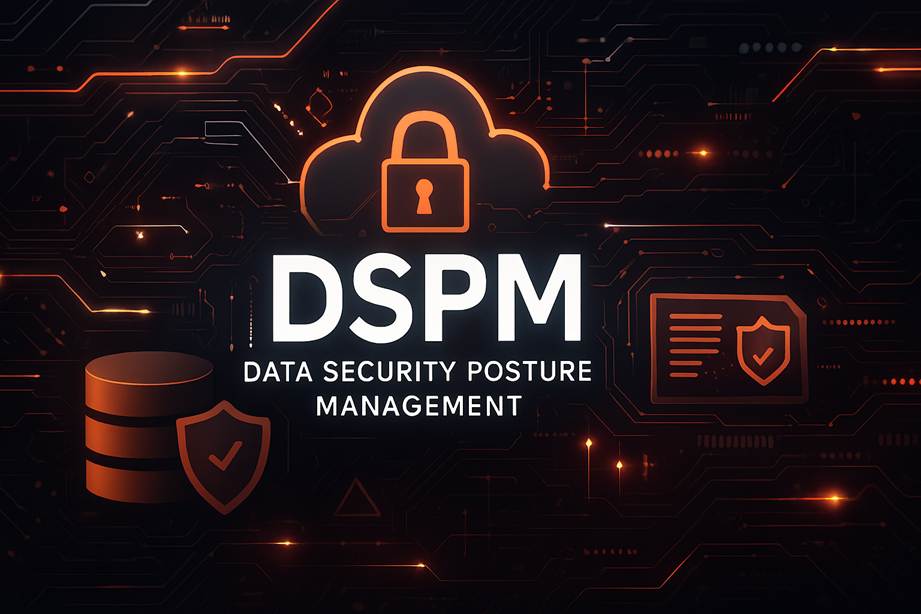
Status: Final Blueprint (Summary)
Author: Shahab Al Yamin Chawdhury
Organization: Principal Architect & Consultant Group
Research Date: 24 May 2024
Location: Dhaka, Bangladesh
Version: 1.0
Executive Summary
Data Security Posture Management (DSPM) has emerged as a critical strategic response to the dissolution of the traditional security perimeter, driven by multi-cloud adoption and hybrid work. DSPM shifts the security focus from infrastructure to the data itself, providing a continuous cycle of data discovery, classification, risk assessment, and remediation. Industry analysts project that by 2026, over 20% of organizations will deploy DSPM to mitigate risks from “shadow data” and an expanding “innovation attack surface”. Key market trends include the convergence of DSPM into broader Cloud-Native Application Protection Platforms (CNAPPs) and the dual role of AI as both an enabling technology and a new risk vector, especially with the rise of Generative AI (GenAI). This document provides a condensed blueprint for implementing a DSPM program, offering strategic insights for executive leadership.
I. The Strategic Imperative: The Shift to Data-Centric Security
The “Castle & Moat” security model, which relies on perimeter defenses, is obsolete. The modern enterprise operates in a borderless ecosystem where data is fragmented across IaaS, PaaS, and SaaS environments. This has given rise to the “Innovation Attack Surface,” where risks are created as a byproduct of business innovation, leading to an explosion of “shadow data” (unmonitored data copies) and “dark data” (unclassified information). Misconfigurations and over-privileged access are now the leading causes of cloud breaches. DSPM addresses this by inverting the traditional model, focusing on securing the data itself, regardless of its location.
II. The DSPM Framework: Core Pillars
A mature DSPM solution is built on four foundational pillars that form a continuous cycle.
- Autonomous Data Discovery and Classification: You cannot protect what you don’t know exists. This pillar involves agentless, comprehensive discovery of all data assets (structured and unstructured) across all environments, including shadow data stores. Advanced DSPM uses AI/ML for high-fidelity, contextual classification of sensitive data like PII, PHI, and intellectual property.
- Continuous Risk Assessment and Prioritization: This pillar moves from visibility to insight by analyzing data to identify misconfigurations, over-privileged access, and compliance violations (GDPR, HIPAA, PCI DSS). The key is contextual risk prioritization, which correlates data sensitivity, exposure levels, and access permissions to surface the most critical threats and reduce alert fatigue.
- Intelligent Access Governance: Answering “who can access what data,” this pillar maps all access paths to sensitive data stores. It enables the enforcement of least-privilege policies by identifying and providing remediation recommendations for excessive or stale permissions.
- Automated Remediation and Prevention: This pillar closes the loop by enabling action. It matures from guided remediation playbooks to fully automated enforcement (e.g., revoking public access). The most advanced stage is “shift-left” prevention, where DSPM integrates into the CI/CD pipeline to block insecure configurations before deployment.
III. Market Landscape & Vendor Analysis
The DSPM market consists of platform-centric CNAPP players and data-centric specialists.
- Platform-Centric (CNAPP) Players (e.g., Wiz, Palo Alto Networks): Integrate DSPM into a broader cloud security platform, offering a unified view of risk by correlating data posture with infrastructure and workload vulnerabilities. Best for organizations prioritizing tool consolidation.
- Data-Centric Specialists (e.g., Cyera, Varonis, Sentra, BigID): Offer deep, best-of-breed DSPM capabilities with a primary focus on high-precision data classification and granular access governance. Ideal for organizations where deep data intelligence is the main driver.
Analyst Perspectives:
- Gartner: Defines the DSPM category, projecting rapid adoption driven by the need to mitigate risks from shadow data. Places DSPM in the “Innovation Trigger” phase of its Hype Cycle.
- Forrester: Views DSPM as a core capability of broader Data Security Platforms, emphasizing integration with DLP and encryption. Ranks vendors like Forcepoint and Thales as “Strong Performers” in their Wave report.
IV. Operationalizing DSPM: A Phased Blueprint
A successful DSPM program is a multi-year journey requiring robust governance.
Phased Rollout Timeline
- Year 1: Foundation & Visibility: Focus on program initiation, vendor selection (including a POC), initial deployment to primary cloud environments, and establishing a Data Governance Committee. Milestone: Baseline data inventory and risk assessment report.
- Year 2: Integration & Initial Automation: Expand coverage to SaaS and DBaaS platforms. Integrate with SIEM/SOAR and ITSM tools. Pilot automated remediation for low-risk findings. Milestone: 90% visibility across core data estate and a 25% reduction in MTTR for critical risks.
- Year 3: Optimization & Proactive Prevention: Scale automated remediation, implement a program for removing Redundant, Obsolete, and Trivial (ROT) data to reduce costs, and integrate DSPM into the CI/CD pipeline (“shift-left”). Milestone: Program reaches “Optimized” maturity level.
Governance Model & KPIs
A RACI matrix is essential for defining roles and responsibilities across Security, IT, Legal, and Business Units. Success should be measured with clear Key Performance Indicators (KPIs).
| Category | Example KPI |
| Visibility | Data Estate Coverage (%) |
| Risk Reduction | Mean Time to Remediate (MTTR) |
| Compliance | Policy Violation Rate |
| Efficiency | Remediation Automation Rate (%) |
V. The Future of DSPM & Strategic Recommendations
The future of DSPM is inextricably linked to AI. AI Security Posture Management (AI-SPM) is emerging to secure AI models and data pipelines from risks like data poisoning and prompt injection. Evolved DSPM is now a critical enabler for safe GenAI adoption, preventing sensitive data leakage into LLM prompts. The market is projected to reach nearly $18 billion by 2033.
Strategic Recommendations for Leadership:
- Elevate DSPM to a Foundational Program: Treat DSPM as a cornerstone of the enterprise data security and governance strategy, not a niche tool.
- Prioritize Strategic Fit in Vendor Selection: Evaluate vendors on their long-term vision and roadmap, especially their strategy for securing AI.
- Champion a Culture of Shared Data Responsibility: A successful program requires a cultural shift where business units, enabled by DSPM insights, take ownership of their data’s security.